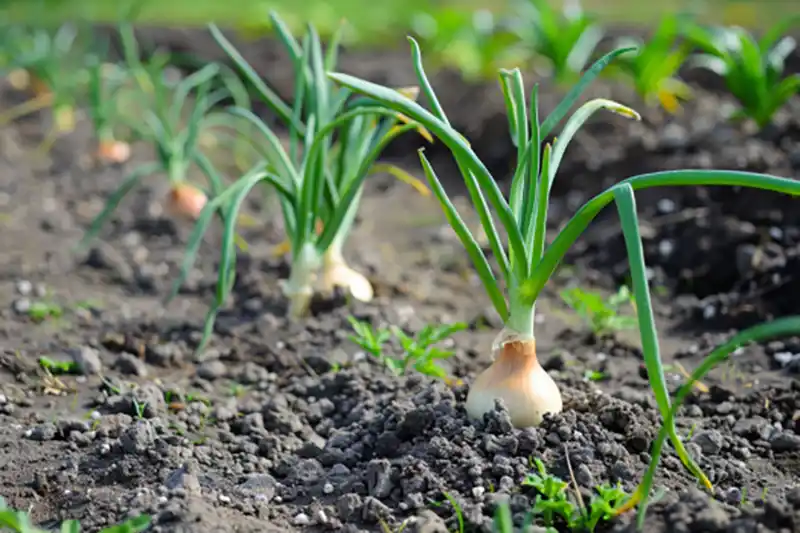A Comprehensive Guide to Growing Onions
Growing onions can be a rewarding endeavor, but it requires careful planning and proper techniques. This guide will cover the essential steps and nutrients needed to grow robust onions that are high-yielding and flavorful.
Choosing the Right Onion for Planting
- Select Healthy Bulbs: Choose firm, healthy bulbs and discard any that are soft or rotting. Planting from seeds can also be beneficial, as onion seedlings tend to adapt better to local climates.
Preparing the Soil
- Soil Enrichment: Onions thrive in soil rich in organic matter. Before planting, enrich your soil with humus, compost, and well-rotted manure to provide essential nutrients.
Using Mycorrhiza
- Enhance Nutrient Absorption: Mycorrhizae are beneficial fungi that improve nutrient uptake. Add about 5 grams of mycorrhiza directly under each onion bulb during planting.
Applying Wood Ash
- Natural Pest Deterrent: Wood ash not only acts as a pest deterrent but also provides calcium and potassium. Sprinkle wood ash around the planting area before planting to enhance soil fertility.
Planting Onions
- Shallow Planting: Plant onions with the bulb just below the soil surface. Create small holes, add mycorrhiza, and position the bulb with the root end down. Cover lightly with soil.
Companion Planting
- Pest Control: Plant onions alongside carrots and parsley to naturally repel pests. Avoid planting onions in the same location each year to prevent disease and soil depletion.
Supplementing Nutrients for Large, High-Quality Onions
Early Stage Feeding
- Promote Leaf Growth: In the first few weeks, provide a balanced fertilizer with a ratio of 10-10-10 or 6-4-8. This supports strong leaf growth and fulfills about 40% of the plants’ nitrogen, potassium, and calcium needs.
Mid to Late Stage Feeding
- Focus on Bulb Development: As bulbs start forming, increase potassium and phosphorus. Use liquid fertilizers rich in calcium and micronutrients, especially during dry spells.
Foliar Feeding with Wood Ash Solution
- Prepare the Solution: Dissolve 100 grams of wood ash in 1 liter of water. After a couple of hours, dilute with an additional 9 liters of water. Spray this solution on onion leaves in the early morning or late evening to enhance nutrient absorption without causing leaf burn.
Regular Watering and Mulching
- Maintain Moisture: Onions need consistent moisture, especially during bulb formation. Mulch with straw to retain moisture, reduce weeds, and limit watering frequency.
Final Tips for Successful Onion Growth
- Rotate Crops: Avoid planting onions in the same spot each year to maintain soil health.
- Conduct Soil Testing: Regular soil tests help understand nutrient levels, allowing adjustments in fertilization plans.
- Use Organic Supplements: Consider organic products like Black Up® to enhance soil structure and nutrient absorption.
Harvesting and Storage
- Curing: Stop watering when onion leaves yellow and fall over. This allows bulbs to mature. Harvest when the necks are soft, and cure them in a dry, ventilated area before storing.
By following these steps and utilizing the right supplements, you can cultivate onions that are healthy, abundant, and delicious. Happy gardening!
